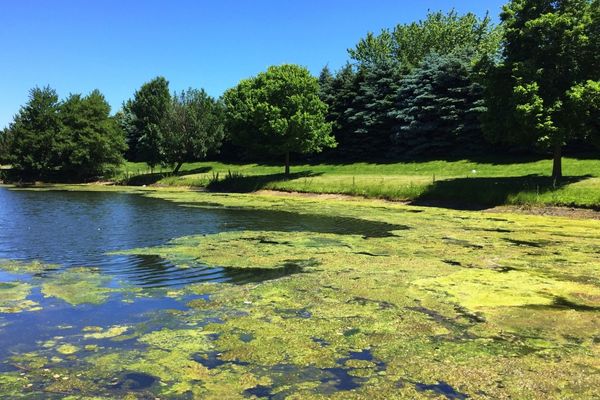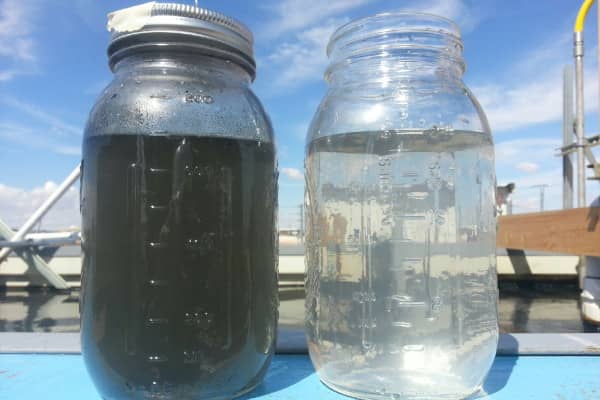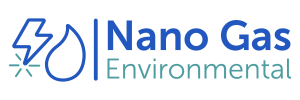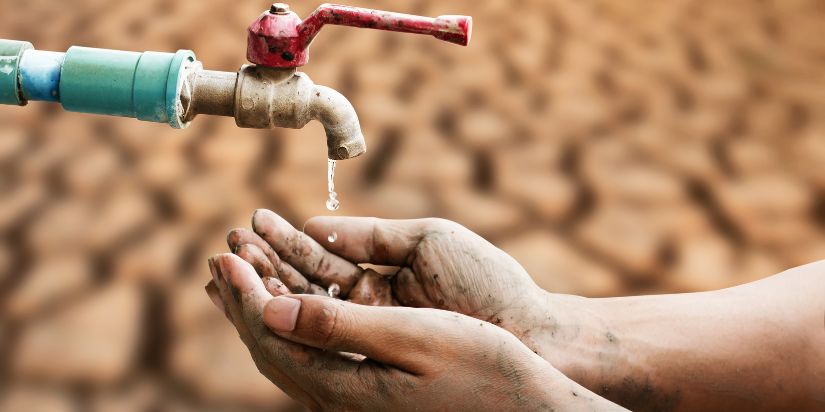Water scarcity is one of the most pressing environmental problems facing our world. According to UNICEF, four billion people encounter this problem at some point every year. The organization also projects that nearly half of the global population will be living in water-stressed areas by 2025.
And yet, major industries like oil and gas continue to produce billions of gallons of polluted water every day. While companies would like to make this toxic water reusable, they either lack the technology to do so or can’t afford it. They can only dispose of the dirty water, thus worsening the water scarcity problem and polluting the environment.
But what if there were a water scarcity solution that was not only eco-friendly but could also improve a company’s bottom line? Such a solution does exist! In this post, we’ll show you how Nano Gas™ Environmental is solving the water scarcity problem with inexpensive and sustainable nanobubble technology.
Polluted Wastewater Creates Stress
Countless industries contribute to the water scarcity problem in one way or another every day. Some have irresponsible practices that lead to contamination and make the water unusable for communities. Others need to use massive amounts of water to keep up with production demands. And for many, there isn’t an economically viable way to use water more responsibly.
One recent example of this was the easing of sewage discharge rules in the United Kingdom. Wastewater plants in England couldn’t get the chemicals they needed to treat polluted wastewater due to supply chain issues caused by Brexit and the pandemic. So, the government gave them permission to release this toxic water into the environment. This desperate measure could have been avoided with an accessible wastewater treatment solution.
Therefore, a major part of the solution to water scarcity is to help industries find better ways to handle their wastewater. Of course, it’s too tall a task for any one organization to try to help every industry at once.
Instead, we at Nano Gas™ Environmental have started by focusing on two industries that need help treating polluted wastewater: the oil and gas industry and rural lagoons.
Wastewater Problems in the Oil and Gas Industry
The oil and gas industry produces 12.6 billion gallons of polluted water every day. The ideal use of this water would be to treat it so that it can be reused in the oil production process. Unfortunately, as we’ll see, many companies can’t afford to do this, and the treatment process isn’t always effective.
So, instead, companies put the environment at risk by disposing of this water in underground wells. Then, since they can’t recycle the water generated during oil production, they must use freshwater instead.
This practice has compounded problems in states like California, where droughts already create natural water stress. Between 2018 and 2021, the California oil companies used three billion gallons of fresh water that would have otherwise been used as municipal drinking water.
Having a better way to recycle this produced water would make a big difference in ensuring people get access to the water they need.
Sewage Lagoons Need Restoration
Another significant source of water stress for local communities is out-of-compliance wastewater lagoons. There are over 8,000 of these bodies of water in the United States alone.
Over time, rural lagoons become contaminated by algae, methane and sludge and put the health of both people and native wildlife at risk.
While solutions to this problem do exist, they’re often too expensive for small communities. Furthermore, studies have raised concerns about the effect these processes can have on marine animals. We’ll discuss these drawbacks more below.

Affordable and Eco-Friendly Solutions Haven’t Been Available
Both of these industries are major contributors to the water scarcity problem. However, it’s not fair to put the blame squarely on their shoulders.
After all, up to this point, the options for treating polluted wastewater haven’t been the greatest. The choices available were either too expensive, potentially hazardous to the environment, ineffective or all three.
Let’s look at the standard practices of the oil and gas industry. The main way companies treat produced water is in massive Saltwater Disposal Wells (SWDs). The purpose of SWDs is twofold:
- Recover as much oil from the water as possible
- Treat the water with hazardous chemicals to make it reusable again
The problem with this process is it doesn’t always work. Instead, it often leaves oil and corrosive chemicals in the water, making it impossible to reuse.
When this process fails, the only option left is to dispose of the toxic water in underground wells. Unfortunately, this practice has led to major environmental problems, such as multiple earthquakes in Texas and Oklahoma.
Moreover, SWDs cost millions of dollars to build. While oil companies in the U.S. can afford to foot this bill, the same cannot be said for the industry abroad. Instead, the only option for oil companies in poorer countries is to release the toxic water back into their waterways.
Many rural communities with polluted lagoons must also make a similar choice. The only option available to clean the lagoon is dredging, which comes with a million-dollar price tag. A lot of small towns can’t afford this cost. So, instead, the polluted lagoon continues to fester with hazardous algal blooms and the release of harmful methane gas, putting the community’s health at risk.
Nano Gas™ Nanobubbles are a Cheaper and Greener Alternative
All this bad news about the water scarcity problem and the industries compounding it may make things seem hopeless. But don’t despair!
At Nano Gas™ Environmental, we’re using advanced science to fight back against these problems. And the best part is, our solutions are the most accessible and sustainable options available!
Perfecting Proven Technology
It all starts with a tiny sphere of gas called a nanobubble. We use our patented technology to inject billions of these bubbles into polluted water so that they can transform it from the inside out.
Since their buoyancy is less than the surface tension of the water, the bubbles remain suspended in the solution. This allows the gas inside the bubbles to cause chemical, physical or biological reactions that detoxify the water and make it usable again.
What makes our solution especially effective is the unique ability to create bubbles containing virtually any gas. This gives us incredible flexibility to clean up whatever types of contamination companies or communities are facing.
Furthermore, we’ve strategically designed our bubbles to clean some of the dirtiest water imaginable without clogging. Plus, we also offer other solutions along with nanobubbles to clean the water as thoroughly as possible. So, polluted water doesn’t need to go to waste anymore. We’re here to clean it up for a healthier planet and a more sustainable future.
Recycling Water at a Fraction of the Cost
This solution is a godsend for the oil and gas and rural wastewater lagoon industries. Not only does it make them greener, but it also saves them a whole lot of money!
Remember that million-dollar price tag attached to creating and running SWDs? Nano Gas™ nanobubbles do everything SWDs can and do it better for hundreds of thousands of dollars less.
This includes separating oil from water. The bubbles do this by attaching to the oil with a charge, causing the oil stuck in the liquid to rise. We can easily collect this oil and then treat the remaining toxic water with more nanobubbles to make it reusable.
Our nanobubble solutions also make dredging wastewater lagoons to remove organic carbon obsolete. The restoration process using nanobubble technology is much quicker than standard aeration and 80% cheaper. Moreover, it doesn’t put wildlife at risk like traditional dredging often does.

The Possibilities for Cleaning Water are Endless
We’re passionate about coming alongside companies and communities to help them solve the problems listed above. From restoring small-town lagoons in Texas to developing partnerships in the South American oil industry, we’re working to solve the water crisis one client at a time. But these industries are only the beginning.
As our company continues to expand, we’re readily considering the next industries we can help. Markets like industrial wastewater treatment, aquaculture, mining and sanitation could also benefit from our affordable water scarcity solution. We’re excited to venture into these spaces in the future!
We Need Your Help to Clean Up Our World
Scientific advances are wonderful things. By creating advanced nanobubble technology, we’ve found more affordable and effective solutions to water stress than ever thought possible.
These breakthroughs wouldn’t have been possible without the support of our investors. Many generous contributors have already joined our private profit-sharing opportunity. If you’re interested in investing, please visit our investment page at the link below to learn more.



